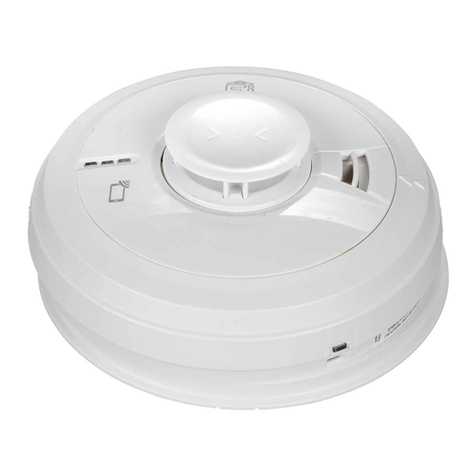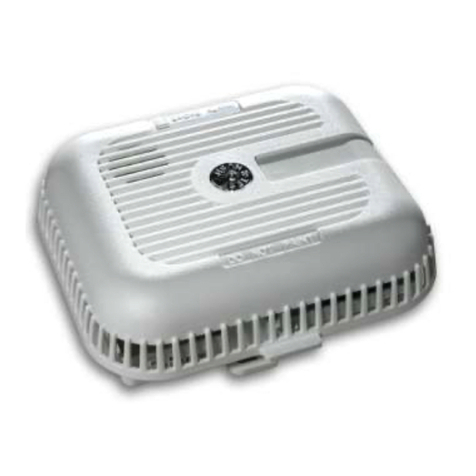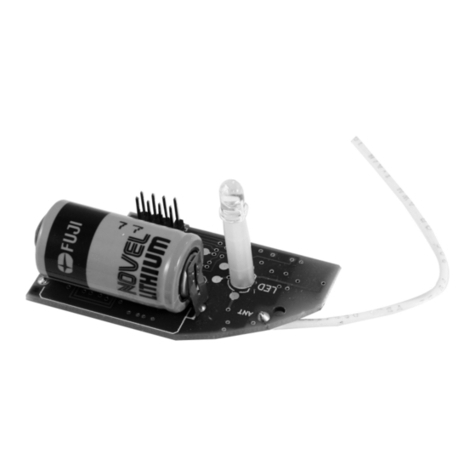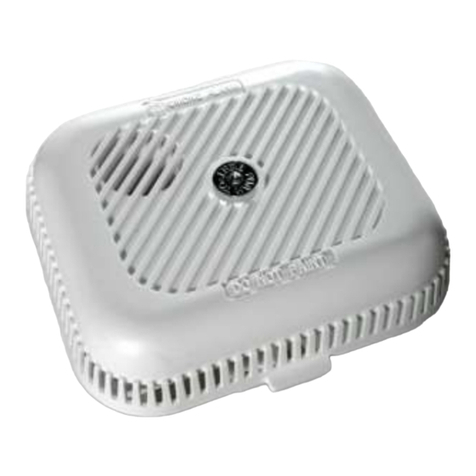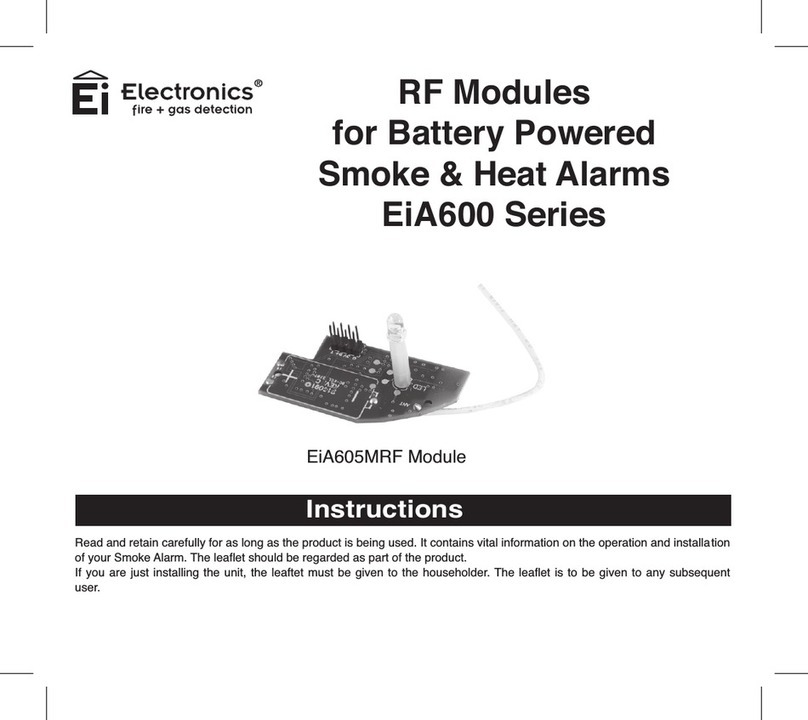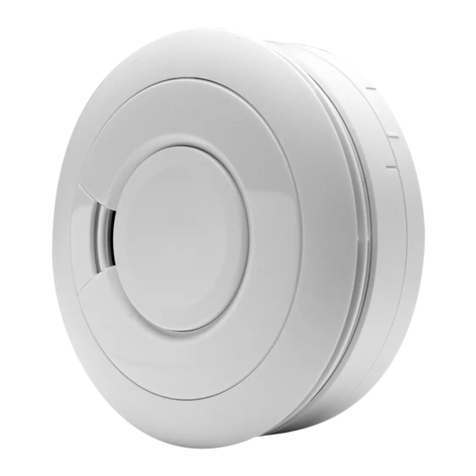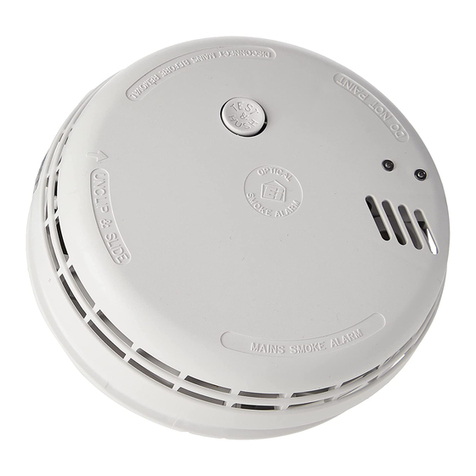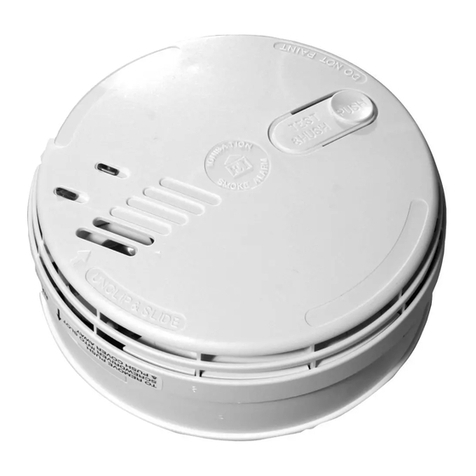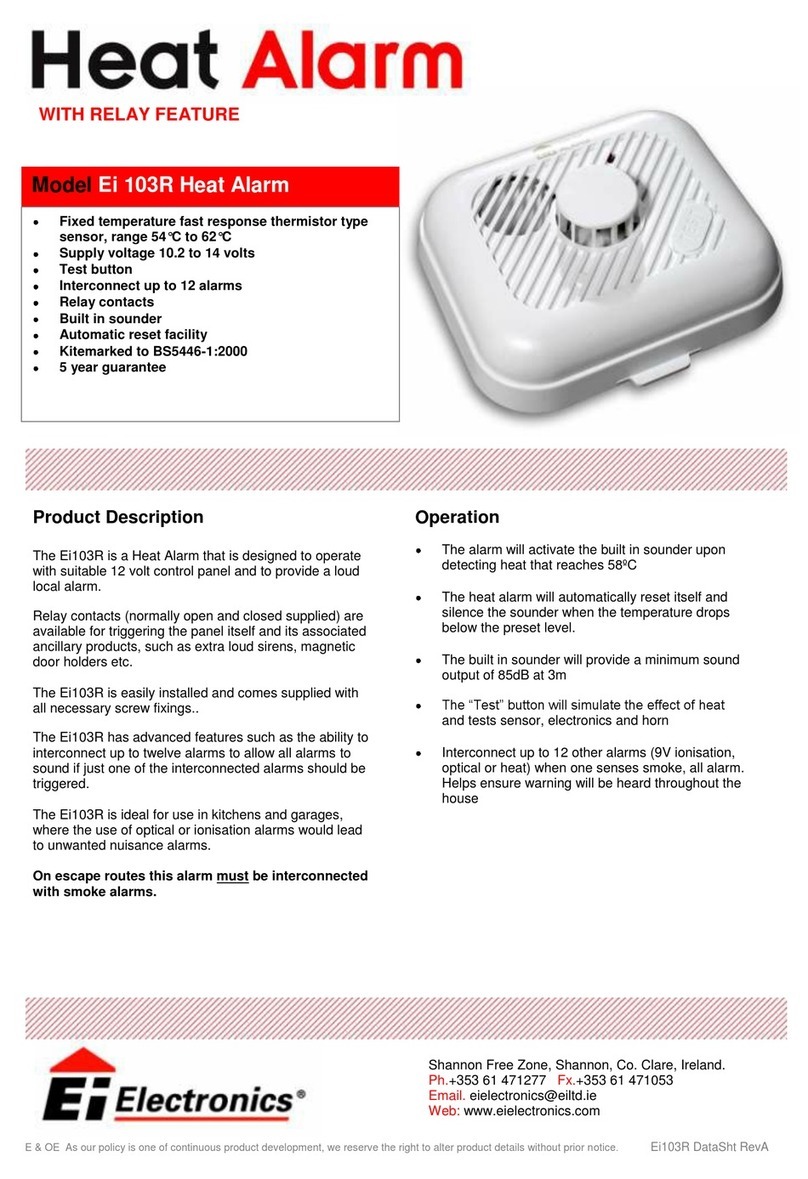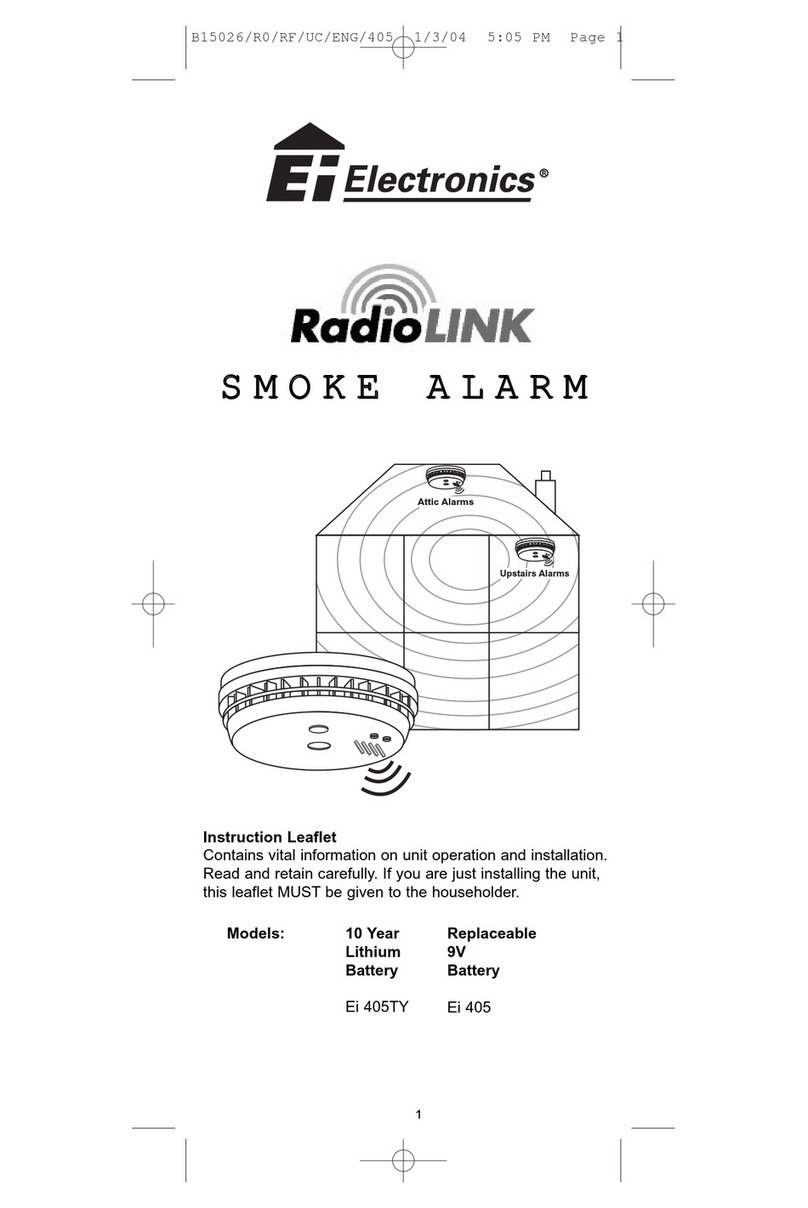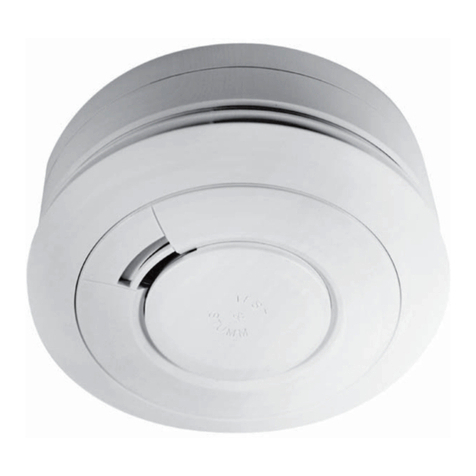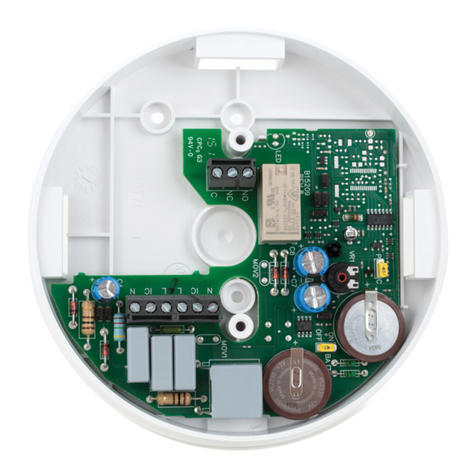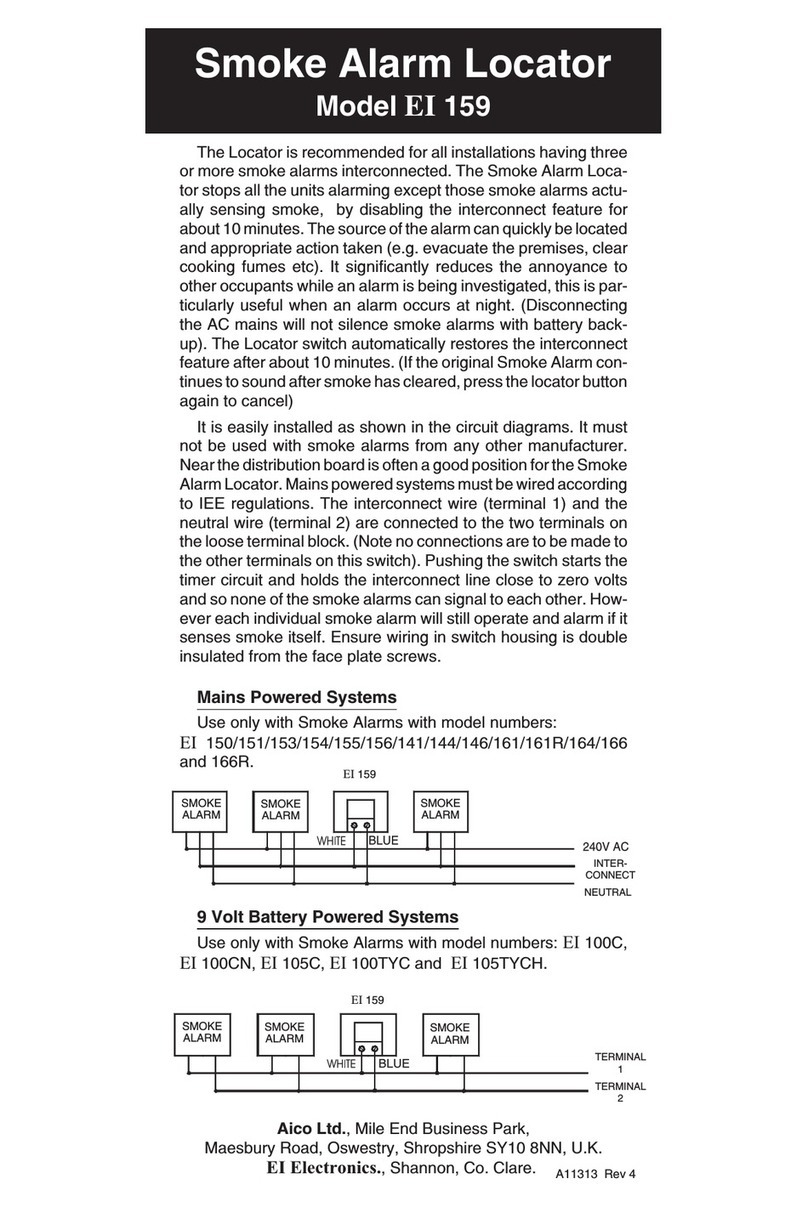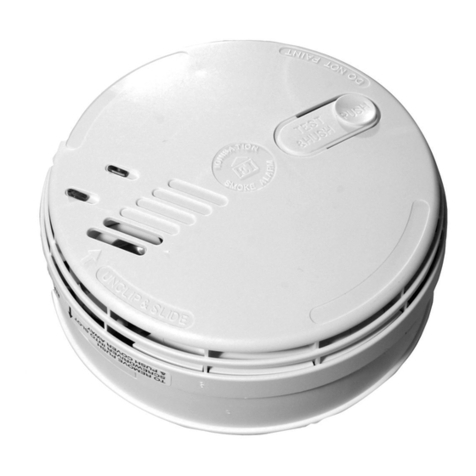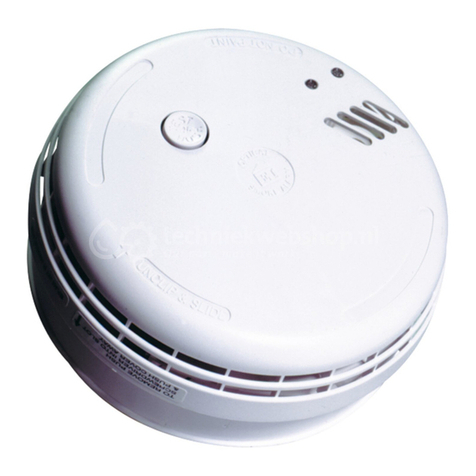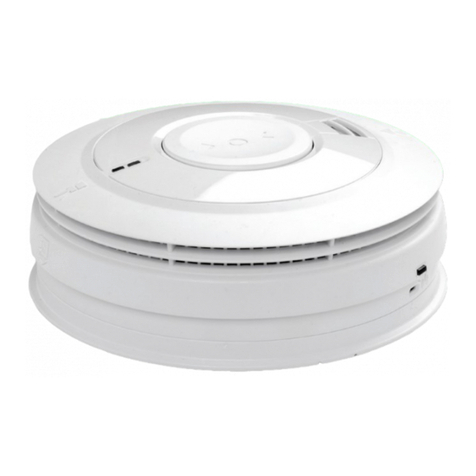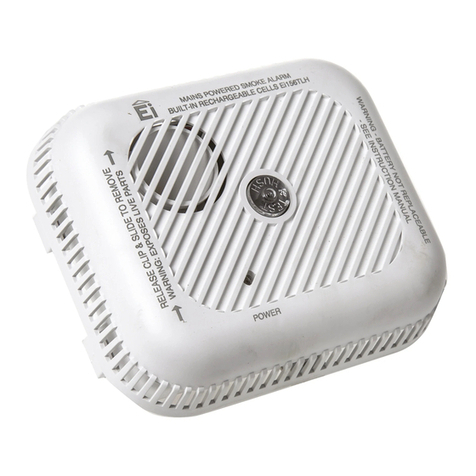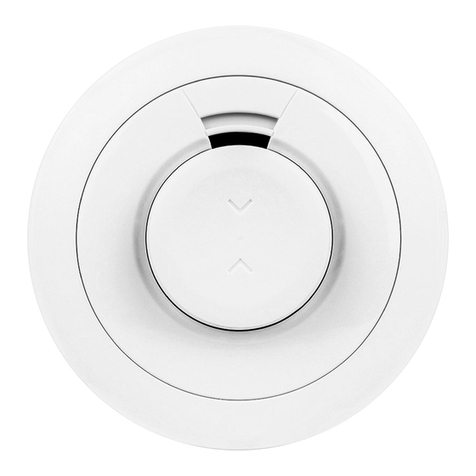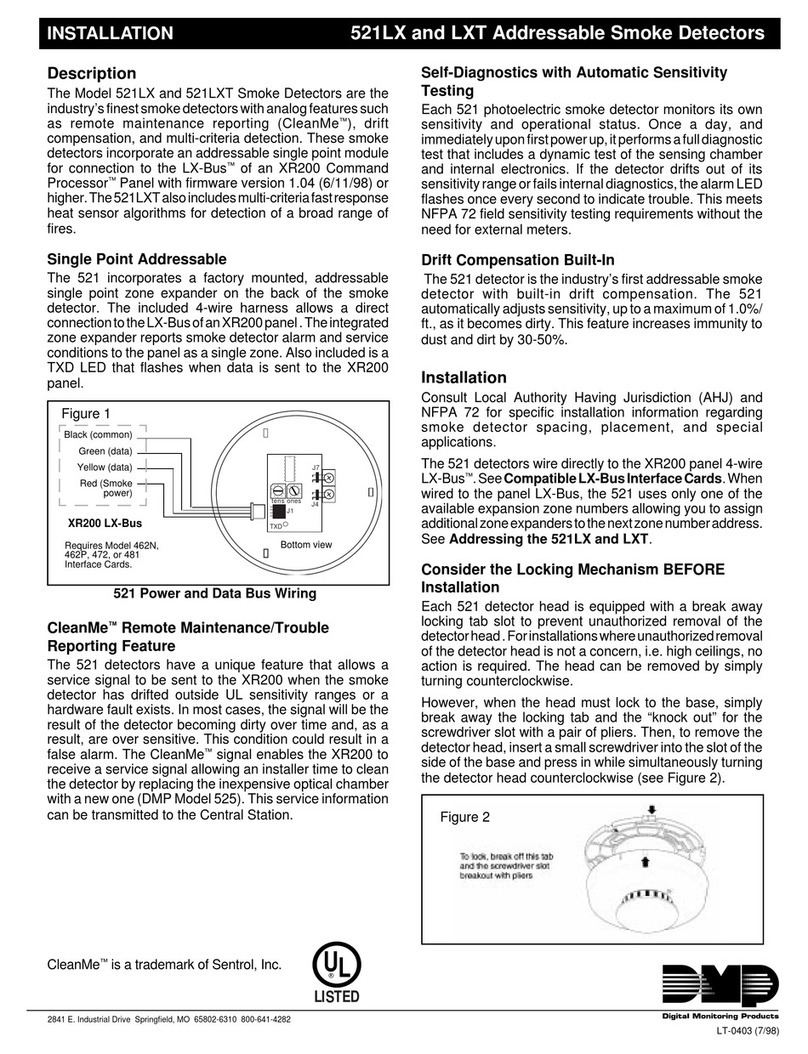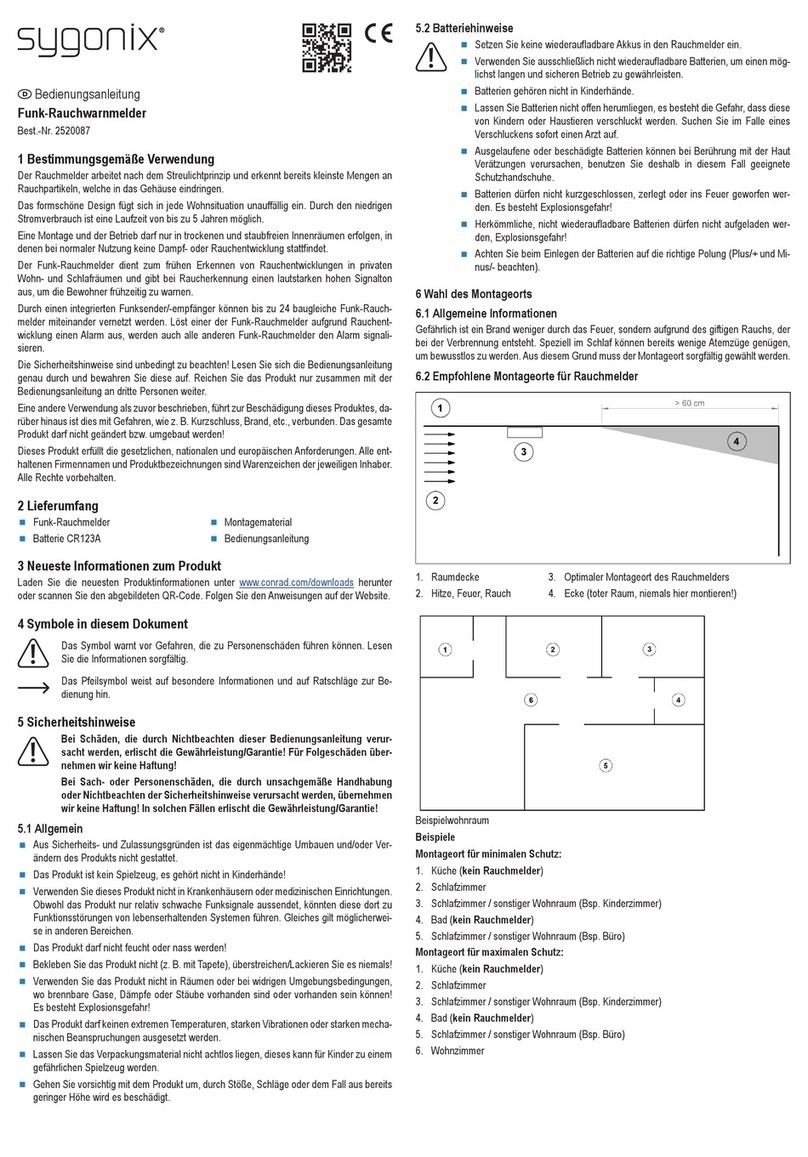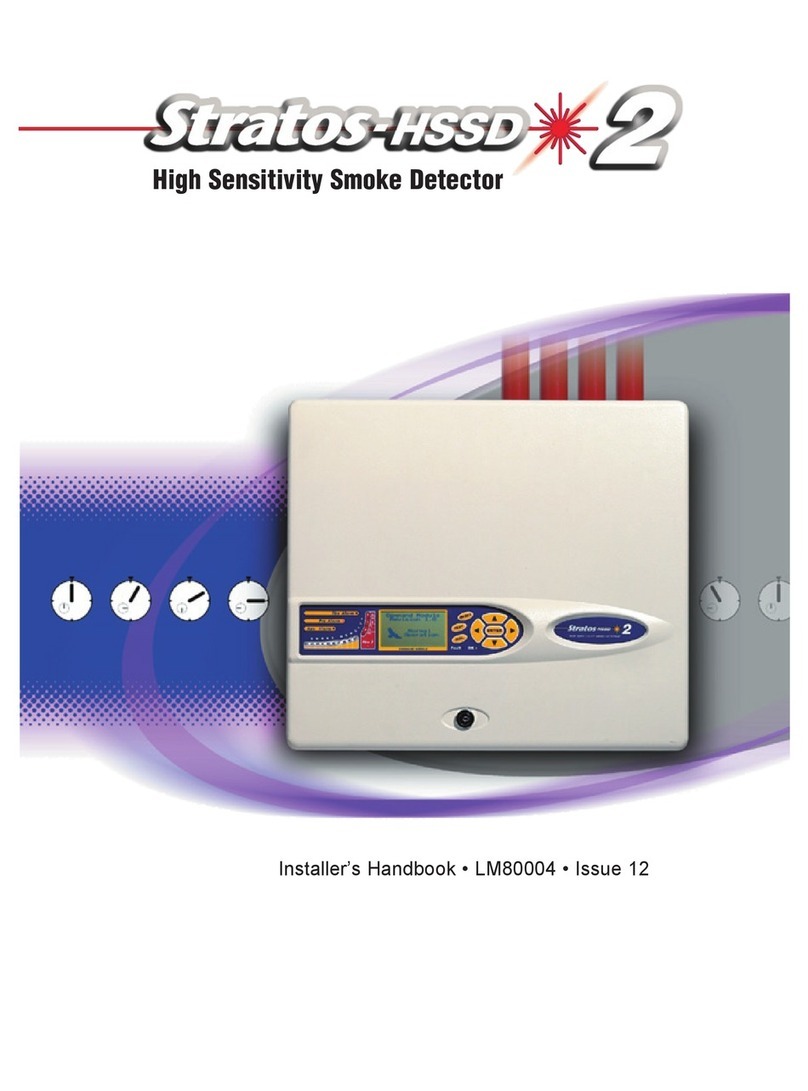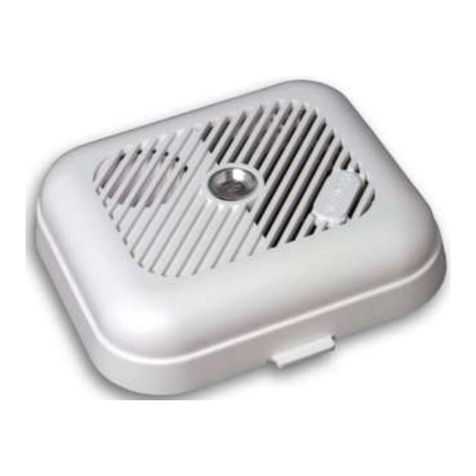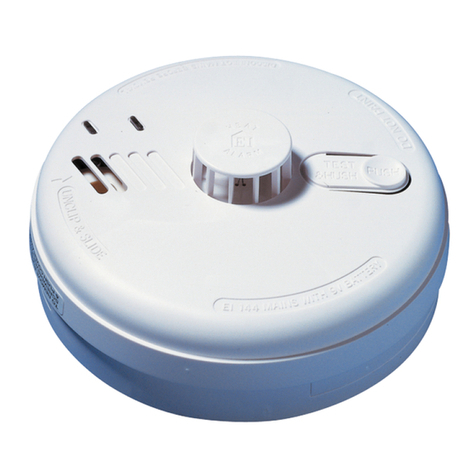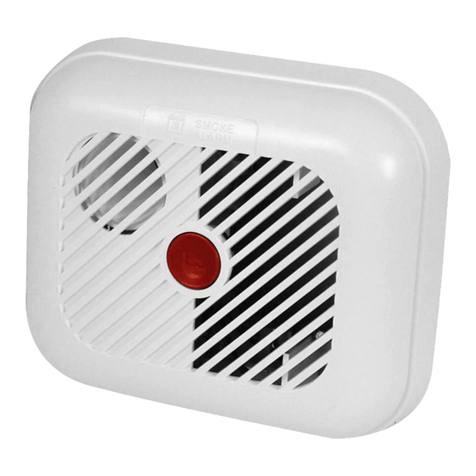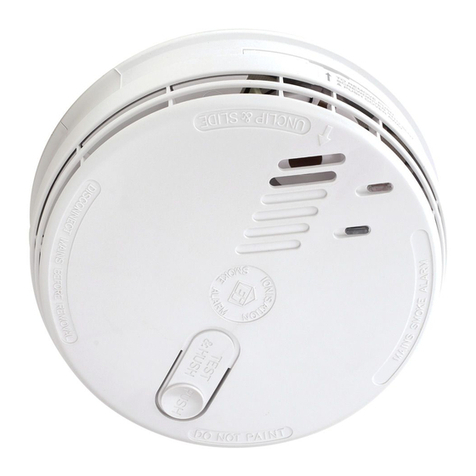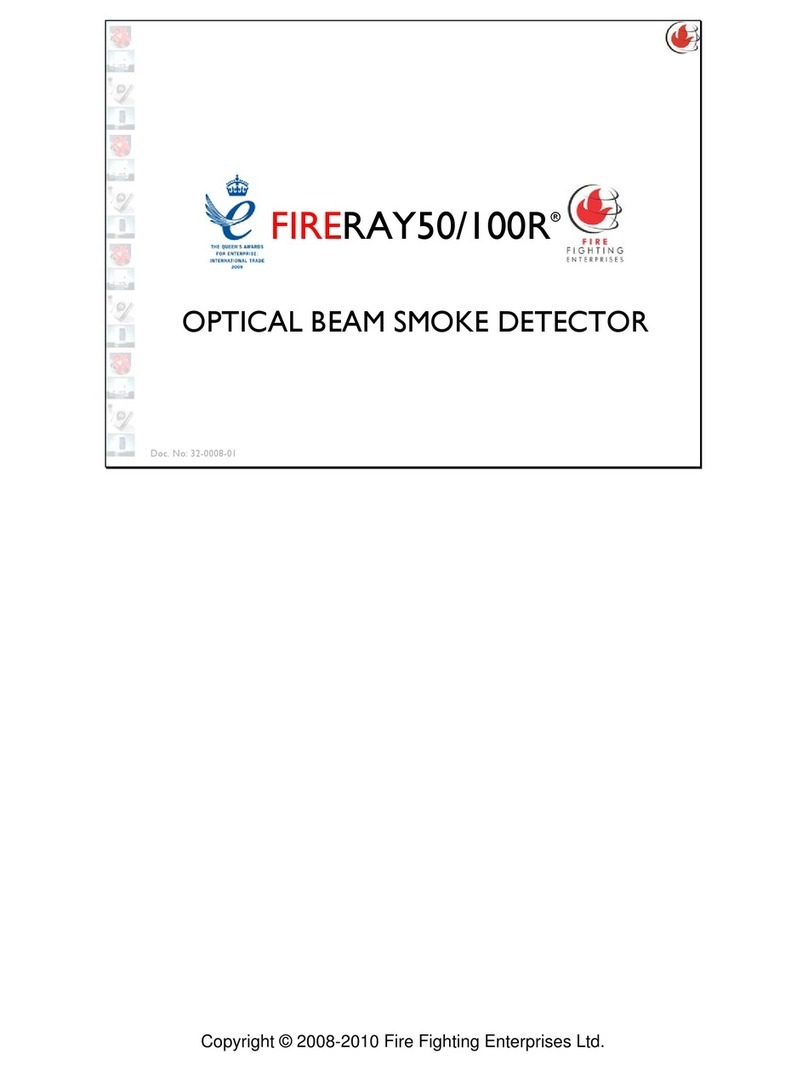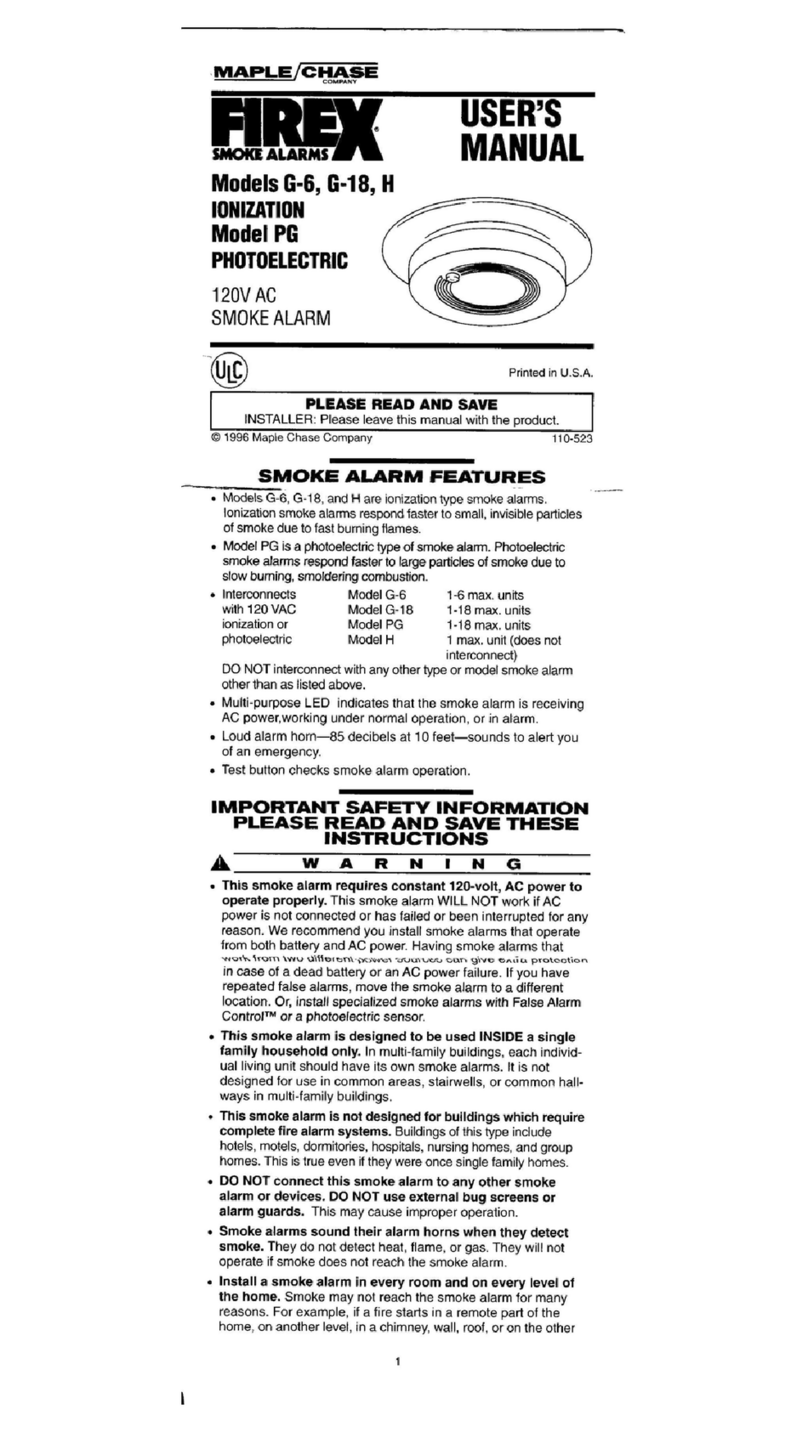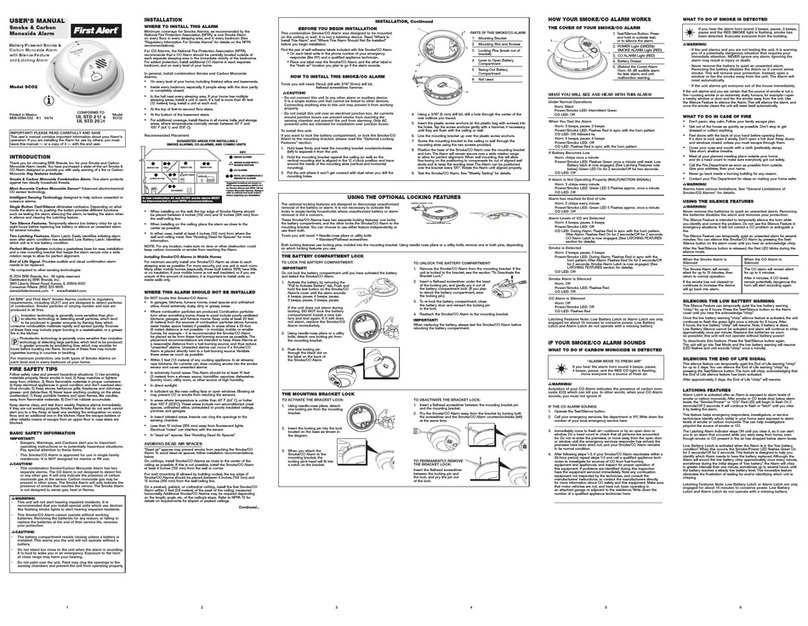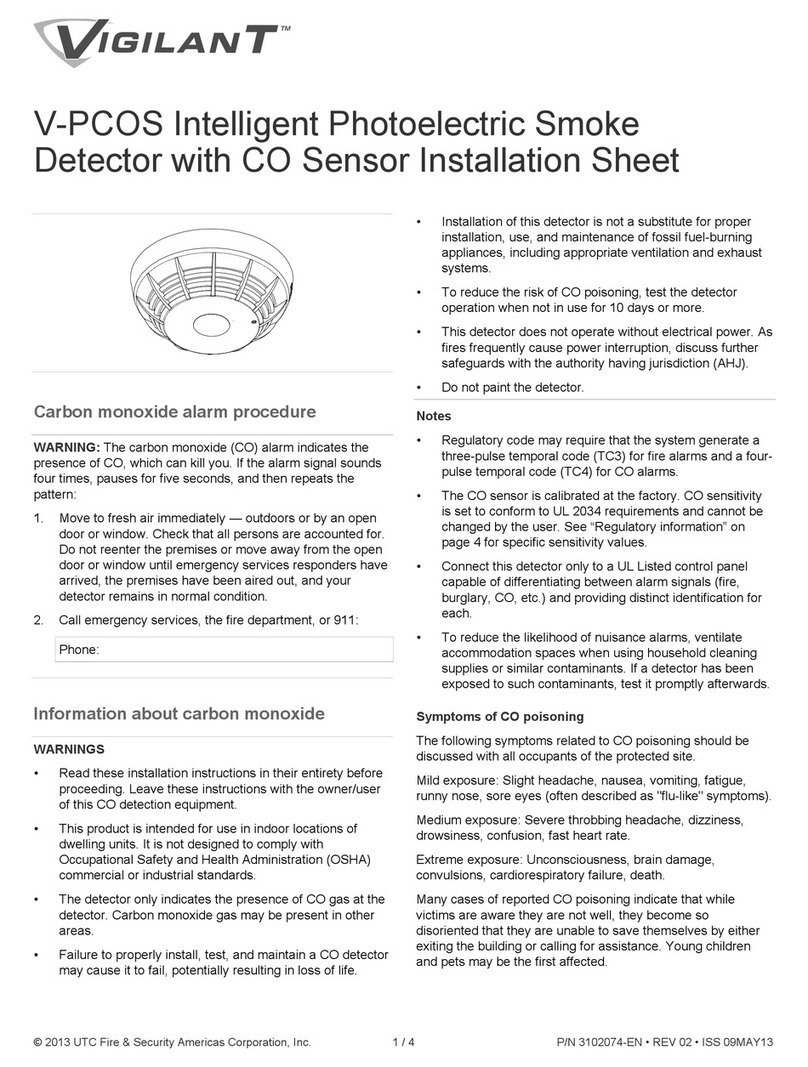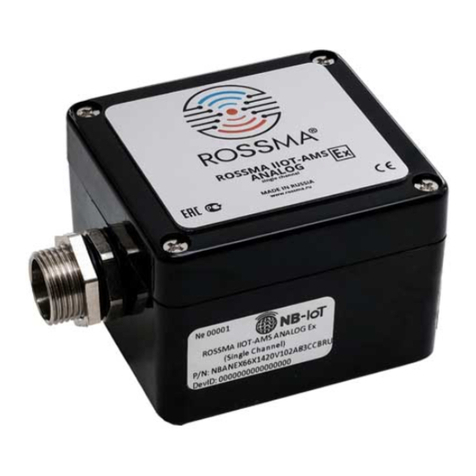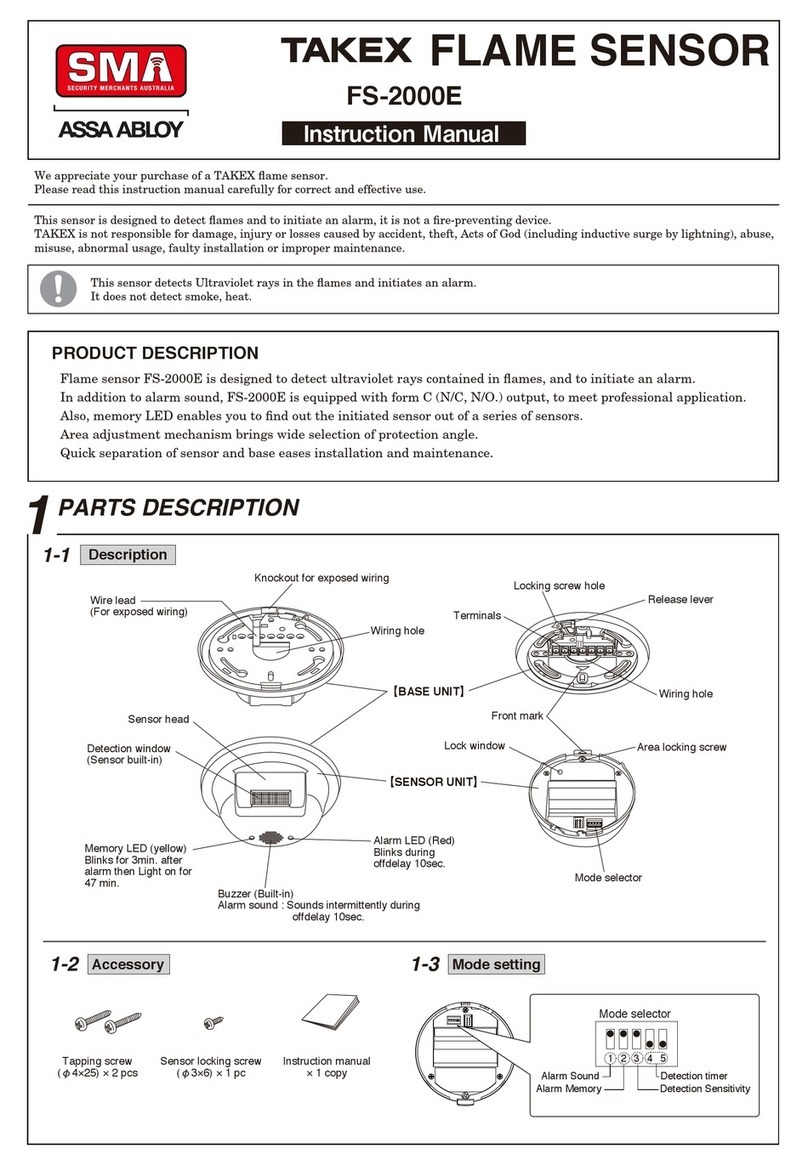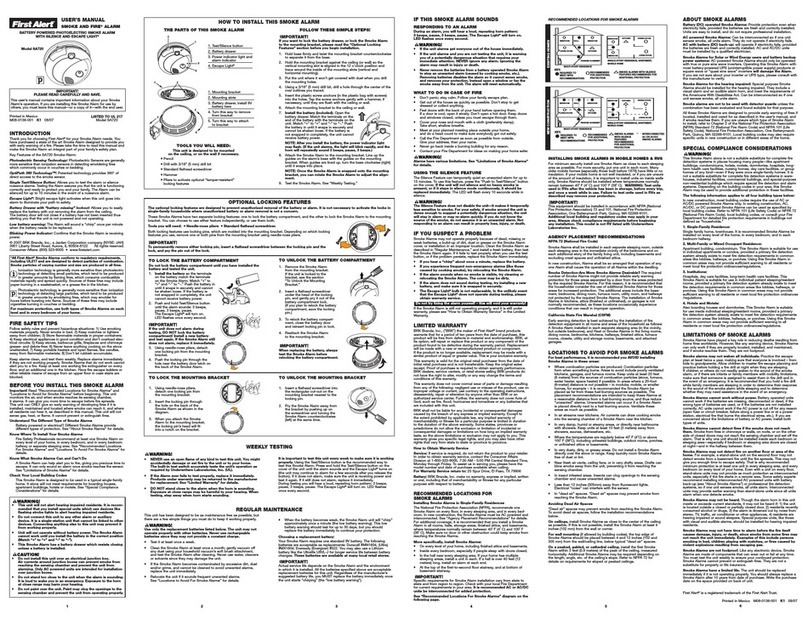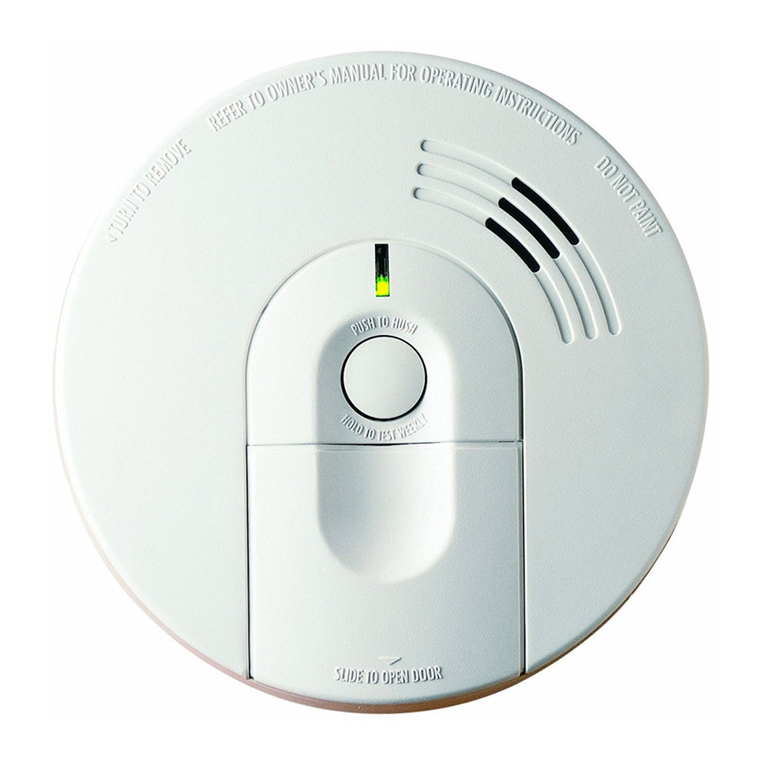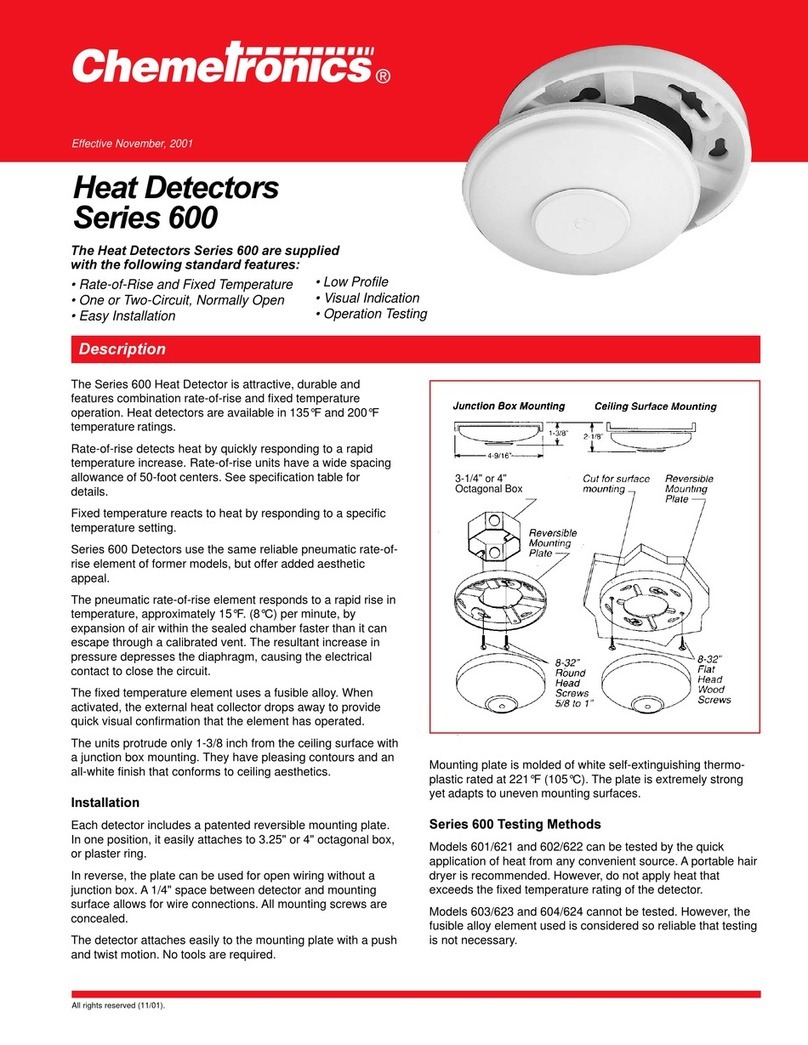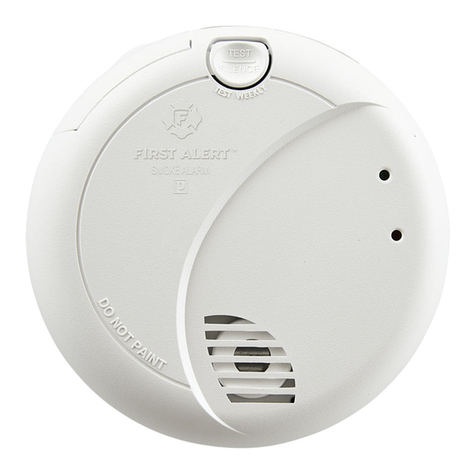(b) carefully cut around the knockouts on the two alarm side
walls so it blends with the contours of the alarm sidewall.
Important: only cut the thinned down knockout section and
leave the top intact as shown. There is only one position suitable
for the surface wiring to enter the alarm.
6. Carefully align the mounting plate and screw into place. Con-
nect the wires to the terminal block. With recessed wiring, en-
sure the rear gasket seals around the edge of the hole in the
ceiling or wall. This is to prevent air draughts affecting the
smoke / heat entering the alarm. If the orifice is too large it
should be sealed with silicone rubber or equivalent.
Replace the wiring cover. Check the battery is connected (140
series only).
Carefully line up the unit on the base and slide on.
Press the test/hush button for 10 seconds. The horn will sound.
CAUTION: Do not attempt to remove the Alarm without first re-
leasing the tamper clip as shown in Figure 1.
7. Connect the mains power to the alarm circuit. Check the
green light is on. Attach the label provided to the distribution
board to identify the alarm circuit.
Attach the ‘Mains Smoke / Heat Alarm’ label on or near the distri-
bution board and write in date installed and the number of
alarms on the circuit.
Check the operation of the Alarm as outlined below.
INTERCONNECTING EI ELECTRONICS SMOKE / HEAT
ALARMS
Note: A maximum of twelve Ei143/144/145/146/ 164/166 Smoke or
Heat Alarms may be interconnected along with an Ei 128 pattress
with relay (see Accessories below).
(If you wish to connect more than twelve alarms contact your distrib-
utor). Systems using more than 3 or 4 alarms must be very carefully
planned to ensure nuisance alarms are not excessive. e.g. from
cooking or weekly testing.
·Smoke Alarm Locator Switch (EI 159) should be incorpo-
rated into the system and be readily accessible to all occu-
pants so that the source of an alarm can be quickly identified.
·All alarms must be cleaned and maintained regularly.
·A qualified person must be on call to quickly remove any
faulty alarms (i.e. units with red light flashing), which are
causing all the alarms to sound.
WARNING: Do not connect these Alarms to any other type of Ei
Alarm, or to any other model produced by another manufac-
turer, apart from those listed above. Doing this may damage the
Alarms and could result in a shock or fire hazard.
The interconnect wire (minimum 0.75mm2cable) must be treated as
if it was live. It should be insulated and sheathed.
A maximum of 250 metres of wire can be used (maximum resistance
between detectors 50 ohms).
These Smoke/Heat Alarms should be interconnected only within the
confines of a single family living unit. If they are connected between
different units there may be excessive nuisance alarms. Everybody
may not be aware that they are being tested or that it is a nuisance
alarm caused by cooking etc.
INSPECTION & TESTING PROCEDURE
After installation check all the Alarms
We recommend that the functioning of the mains battery back-up is
checked directly after installation as follows:
(i) Turn off the mains power at the distribution board and check that
the green mains indicator on the alarm is extinguished.
(ii) Press the test button and ensure that the horn sounds loudly for
10 seconds. Ensure that any interconnected alarms also sound.
(iii) Repeat the process on all interconnected alarms on the system.
Turn the mains power on only if the units pass the above test.
(iv) Check that the green mains indicator light is on. (If it is off check
circuit breakers, fuses and wiring etc.) Check the red light on the
cover flashes every 40 seconds.
(v) Press the test button for up to 10 seconds to ensure the sensor
chamber, electronics and sounder are working. The red light on the
cover will flash while horn is sounding. The alarm will stop when the
button is released. Pressing the test button simulates the effect of
smoke or heat during a real fire and is the best way to ensure the
Alarm is operating correctly.
WARNING: DO NOT TEST WITH FLAME.
This can set fire to the Alarm and damage the house.
We do not recommend testing with smoke or heat as the results
can be misleading unless special apparatus is used.
Interconnected alarms
Test the first unit by pressing the button. All the detectors should
alarm within about 5 seconds of the first horn sounding and the
red light on the first unit only will flash once a second. Check all
the other units similarly. (Note: Heat alarms signal to other inter-
connected alarms about 4 seconds after their own horn sounds.
Optical alarms signal within about a second.
Checking Battery Back-up
When the unit is beeping:
The Alarm automatically monitors the battery every 40 seconds to
ensure that it is satisfactory. If it is depleted it will give a short beep
every 40 seconds.
Models Ei144 & Ei 146 only
Before replacing the battery, check that the beeps are not due to one
of the following:
(i) battery snaps not connected properly.
(ii) On the Optical Smoke Alarm only (EI 146/145) if the unit beeps
and the red light does not flash at the same time it indicates a prob-
lem with the smoke chamber - see Cleaning the Smoke Alarm sec-
tion below.
If the beeps have continued for over 20 minutes (and the other
causes of beeps have been ruled out - see below) the battery must
be replaced.
(iii) Switch off the mains and remove the unit as shown in figure 1a.
Remove depleted battery and replace with one of the specified 9V
alkaline batteries. The alarm cannot be replaced on the mounting
plate unless a battery is installed. After replacing the battery, slide
on the mounting plate then press the test button and ensure horn
sounds loudly before you turn on the mains. If it is satisfactory turn
on the mains and check that the green light comes on. Note: Only
use the specified Alkaline batteries shown on the base label
(Duracell MN1604 or Eveready 522). We recommend that the “use
by date” on the battery should still have at least 2 years to go. Older
batteries will give beeps prematurely. We recommend that the bat-
tery is replaced each year for optimum performance.
Models Ei161, Ei164 & Ei 166 only
(i) Check that the green mains power light is on. If it is off the Alarm
has been powered from the cells and the beeps indicate they are de-
pleted. Re-connect the mains, check fuse, circuit breakers and wir-
ing. If in doubt contact a qualified electrician. The beeps should
cease within 2 hours as the cells charge up.
(ii) The cells may be depleted. The beeps should cease within 2
hours as they charge up. Fully charged, the cells will provide up to 6
months back-up without mains power.
(iii) On the Optical Smoke Alarms only (EI 166) if the unit beeps
and the red light does not flash at the same time it indicates a prob-
lem with the smoke chamber - see Cleaning the Smoke Alarm.
If all of the above possible causes of beeps have been ruled out but
the beeping has still persisted for over 2 hours with the green light on
- the rechargeable cells are probably defective. The Smoke / Heat
Alarm must be returned to the manufacturer for repair or replace-
ment (see section Getting Your Alarm Serviced).
(Please note: The ionisation alarms (EI140/141/161) give two short
beeps about a second apart at the end of the hush period (i.e. about
10 minutes after test/hush button has been pressed. These two
beeps should not be confused with low battery beeps.
(a) Relay Module EI 128:
The Ei 128 module has a relay rated 250V AC / 5 amps. This is use-
ful for remote signalling and turning on lights.
(b) Smoke Alarm Locator Ei 159:
The Smoke Alarm locator is recommended for systems with three or
more Smoke / Heat Alarms as it helps quickly identify the unit in
alarm and reduces the impact of nuisance alarms.
Pressing the Smoke Alarm Locator button will silence all intercon-
nected alarms for 10 minutes, except those sensing fire. It is easily
installed between the interconnect and neutral terminals.
(2) The Heat alarms (Ei 143/144/164) give two beeps 10 minutes
after the test/hush button is pressed.
(3) If the Optical units (EI 146/145/166) beeps without the red light
flashing at the same time, the chamber is defective. Clean the
chamber.
4. INTERCONNECTED ALARMS DO NOT ALL SOUND:
(1) Hold test button for 10 seconds after first alarm has sounded
to ensure signal is transmitted to all units.
(2) Switch off mains and check that live, neutral and intercon-
nect cables have been correctly connected and that the con-
nections are tight.
10 11 12 13
CHECKING THE OPERATION OF THE
ALARMS
PAGE 10,11,12&13
B13729
REV-1
ACCESSORIES
Figure 8
L- LIVE
N- NEUTRAL
IC -I
NTERCONNECT
TROUBLESHOOTING CONT.




